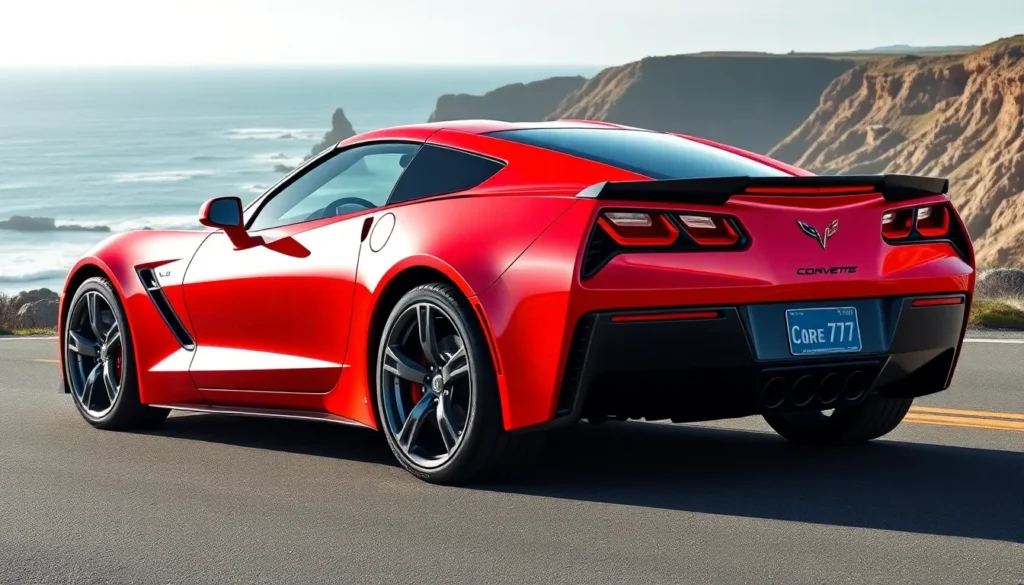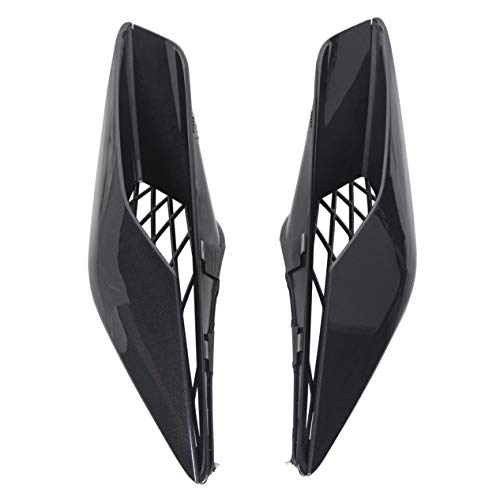The Chevrolet Corvette C7 represents one of America’s most revolutionary sports car transformations. When Chevrolet unveiled this seventh-generation masterpiece in 2014, we witnessed a complete reimagining of the iconic Corvette formula that had captivated enthusiasts for decades.
We’re talking about a machine that doesn’t just push boundaries—it obliterates them. The C7 introduced groundbreaking design elements like aggressive angular bodywork, advanced lightweight construction, and cutting-edge technology that elevated the Corvette from muscle car legend to industry-class supercar competitor. From the base Stingray to the track-dominating Z06 and ZR1 variants, each C7 model delivers extraordinary performance that rivals European exotics at a fraction of the cost.
Whether you’re considering purchasing a C7 or simply want to understand what makes this generation so special, we’ll explore everything that transformed the Corvette into the sophisticated performance machine we know today.
Design and Exterior Features
Design excellence defines the Chevrolet Corvette C7’s visual impact through revolutionary styling choices. Modern aerodynamic principles transform each surface into functional performance elements.
Aggressive Styling and Aerodynamics
Aggressive design language dominates the C7’s exterior profile with sharp angular lines and dramatic proportions. Front fascia features bold air intakes measuring 15% larger than previous generations to maximize cooling airflow. LED headlights integrate seamlessly with the carbon fiber hood’s sculpted vents.
Side profile showcases dramatic fender flares that accommodate wider wheel configurations up to 345mm rear tires. Aerodynamic side skirts channel airflow beneath the vehicle while reducing lift by 12% compared to the C6 generation. Carbon fiber side mirrors provide both weight reduction and enhanced aerodynamic efficiency.
Rear spoiler automatically deploys at speeds above 35 mph to generate additional downforce. Quad exhaust outlets positioned centrally create the signature Corvette sound signature. Performance variants like the Z06 feature more aggressive front splitters and larger rear wings that increase downforce by 400 pounds at 150 mph.
Color Options and Special Editions
Color palette spans 12 standard options including Arctic White, Torch Red, and Laguna Blue Tintcoat. Exclusive colors like Competition Yellow and Velocity Yellow distinguish special model variants. Carbon Flash Metallic finish complements the vehicle’s performance oriented design language.
Special editions enhance visual appeal through unique color combinations and trim packages. Admiral Blue Heritage Package commemorates racing history with exact wheel designs and interior accents. Collectors Edition models feature exclusive Ceramic Matrix Gray paint with Carbon Flash accents available only during final production years.
| Special Edition | Production Years | Key Visual Features |
|---|---|---|
| Grand Sport Heritage Package | 2017-2018 | Tension Blue with white racing stripes |
| Carbon 65 Edition | 2018 | Carbon Flash exterior with red accents |
| Drivers Series | 2018-2019 | Exclusive color combinations with performance upgrades |
Limited production runs create collector value with exact paint combinations unavailable on standard models. Graphics packages include racing stripes, hash marks, and commemorative badging that connect modern C7 models to Corvette racing heritage.
Engine Performance and Specifications
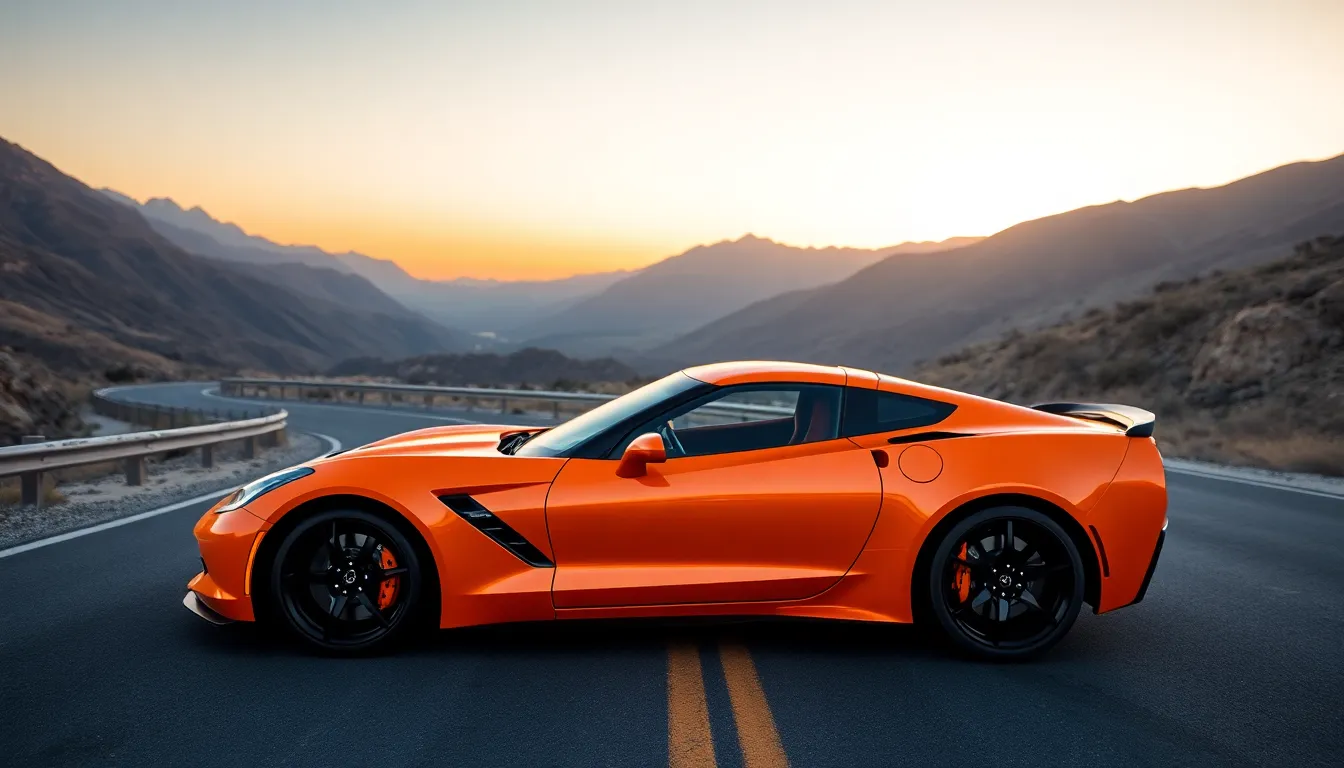
The C7 Corvette’s engine lineup represents a masterclass in American V8 engineering. Each powerplant delivers distinctive performance characteristics that cater to different driving preferences and track requirements.
Base Stingray V8 Engine
The LT1 6.2-liter naturally aspirated V8 serves as the foundation of C7 performance, producing 455 horsepower and 460 lb-ft of torque in base configuration. Direct injection technology combines with variable valve timing to optimize fuel efficiency while maintaining aggressive power delivery. Dry sump lubrication ensures consistent oil pressure during high-performance cornering and track sessions.
The engine features aluminum construction that reduces overall weight by 40 pounds compared to the previous LS3 unit. Active fuel management deactivates half the cylinders during light-load conditions, achieving an EPA-estimated 29 mpg highway rating. Carbon fiber intake manifold and composite oil pan contribute to the engine’s lightweight design philosophy.
| Specification | Value |
|---|---|
| Displacement | 6.2L |
| Horsepower | 455 hp @ 6,000 rpm |
| Torque | 460 lb-ft @ 4,600 rpm |
| Compression Ratio | 11.5:1 |
| Redline | 6,600 rpm |
Z06 Supercharged Performance
The LT4 supercharged 6.2-liter V8 transforms the C7 into a track-focused monster, generating 650 horsepower and 650 lb-ft of torque. The Eaton R1740 TVS supercharger operates with a dual-rotor design that provides immediate throttle response without traditional turbo lag. Intercooling system maintains optimal intake temperatures during extended high-performance driving.
Forged pistons and connecting rods handle the increased cylinder pressures from forced induction. The supercharger spins at 20,000 rpm maximum, creating 9.4 psi of boost pressure. Titanium intake valves and sodium-filled exhaust valves manage extreme operating temperatures during track sessions.
Performance figures include 0-60 mph acceleration in 2.95 seconds and quarter-mile times of 10.95 seconds at 127 mph. The engine incorporates dry sump lubrication with a 10.5-quart capacity oil system. Eight-speed automatic transmission handles the massive torque output with paddle shifters providing manual control.
ZR1 Track-Focused Power
The LT5 supercharged 6.2-liter V8 represents the pinnacle of C7 engineering, delivering 755 horsepower and 715 lb-ft of torque. The larger LT5 supercharger produces 14 psi of boost pressure, requiring extensive cooling modifications throughout the engine bay. Dual fuel injection systems combine port and direct injection for optimal power delivery across the entire rpm range.
Forged aluminum pistons feature unique coatings that withstand extreme combustion pressures. The camshaft profile optimizes valve timing for maximum airflow at high rpm ranges. Quad exhaust system with titanium components reduces weight while creating the distinctive ZR1 exhaust note.
Performance capabilities include 0-60 mph acceleration in 2.85 seconds and a top speed of 212 mph. The engine requires premium 93-octane fuel for optimal performance and incorporates active engine mounts that reduce vibration during idle. Seven-speed manual transmission remains the only available option, maintaining the purist driving experience that enthusiasts demand.
Interior Comfort and Technology

The Chevrolet Corvette C7 interior represents a dramatic departure from previous generations, incorporating premium materials and cutting-edge technology systems. This cabin transformation elevates the driving experience through sophisticated design elements and advanced connectivity features.
Cabin Design and Materials
Premium leather upholstery covers the seats, dashboard, and door panels throughout the C7 interior. Carbon fiber trim accents appear on the dashboard, center console, and door inserts, creating visual connections to the car’s performance-focused exterior design. Aluminum pedals and shift knobs provide tactile feedback while reinforcing the sports car’s high-performance character.
The driver-oriented cockpit positions all controls within easy reach, featuring an 8-inch diagonal color display that houses the instrument cluster. Sueded microfiber headliners come standard across all trim levels, while available Napa leather seating surfaces offer enhanced comfort for extended driving sessions. Competition Sport seats provide additional bolstering and support for track driving scenarios.
Climate control systems include dual-zone automatic temperature control with separate driver and passenger settings. Heated and ventilated seats integrate into the seating surfaces, providing comfort across different weather conditions. The cabin noise levels measure significantly lower than previous Corvette generations due to improved insulation materials and acoustic engineering.
Infotainment and Connectivity Features
The MyLink infotainment system operates through an 8-inch color touchscreen display positioned in the center console. Apple CarPlay and Android Auto compatibility allows smartphone integration for music streaming, navigation, and hands-free calling functions. OnStar 4G LTE Wi-Fi hotspot capability transforms the Corvette into a mobile internet hub for up to seven devices.
Navigation systems include 3D mapping with turn-by-turn directions and real-time traffic updates. The Bose premium audio system delivers concert-quality sound through strategically placed speakers throughout the cabin. USB charging ports and auxiliary input connections accommodate multiple device types and charging requirements.
Performance Data Recorder (PDR) technology captures high-definition video of driving sessions while simultaneously recording telemetry data including speed, gear position, and G-forces. The system stores footage on an SD card for later review and analysis. Head-Up Display (HUD) technology projects critical driving information onto the windshield, including speed, gear selection, and tachometer readings, allowing drivers to monitor performance data without taking their eyes off the road.
Driving Experience and Handling

The Chevrolet Corvette C7 delivers exceptional driving dynamics that blend track-focused performance with surprising everyday usability. Our analysis reveals how this sports car excels in both high-performance scenarios and comfortable daily commutes.
Track Performance Capabilities
Track enthusiasts discover the C7’s magnetic ride control system adapts to racing conditions in milliseconds. Performance Traction Management (PTM) offers five distinct driving modes including Track Mode that maximizes cornering grip and acceleration. Electronic Limited Slip Differential (eLSD) distributes torque precisely between rear wheels during aggressive cornering maneuvers.
Cornering capabilities reach 1.05g of lateral acceleration on the base Stingray model equipped with Z51 Performance Package. Z06 variants achieve up to 1.2g of lateral grip thanks to Michelin Pilot Super Sport tires and advanced aerodynamics. Carbon ceramic brakes on Z06 and ZR1 models provide consistent stopping power during extended track sessions.
Launch control system enables consistent 0-60 mph acceleration times by managing wheel spin and clutch engagement. Racing data shows the Z06 achieves 0-60 mph in 3.2 seconds while the ZR1 completes the sprint in 2.85 seconds. Quarter-mile performance reaches 11.2 seconds for the Z06 and 10.6 seconds for the ZR1.
Daily Driving Comfort
Daily commuting comfort exceeds expectations for a sports car focused on performance capabilities. Magnetic Selective Ride Control adjusts suspension damping 1,000 times per second for smooth ride quality on city streets. Tour Mode softens the suspension response while maintaining precise steering feedback for highway cruising.
Interior ergonomics accommodate drivers during extended journeys with 8-way power-adjustable seats featuring lumbar support. Dual-zone automatic climate control maintains consistent cabin temperatures while premium leather appointments reduce fatigue on longer drives. Sound deadening materials throughout the cabin minimize road noise at highway speeds.
Storage practicality includes a rear cargo area with 15 cubic feet of space accommodating weekend luggage. Front trunk provides additional 1.8 cubic feet for smaller items or track day equipment. Cup holders and door pockets offer convenient storage for daily driving essentials.
Visibility improvements over previous generations include larger side windows and reduced blind spots. Backup camera with guidelines assists parking in tight urban spaces while available curb view cameras protect expensive wheels from damage.
Reliability and Ownership Costs
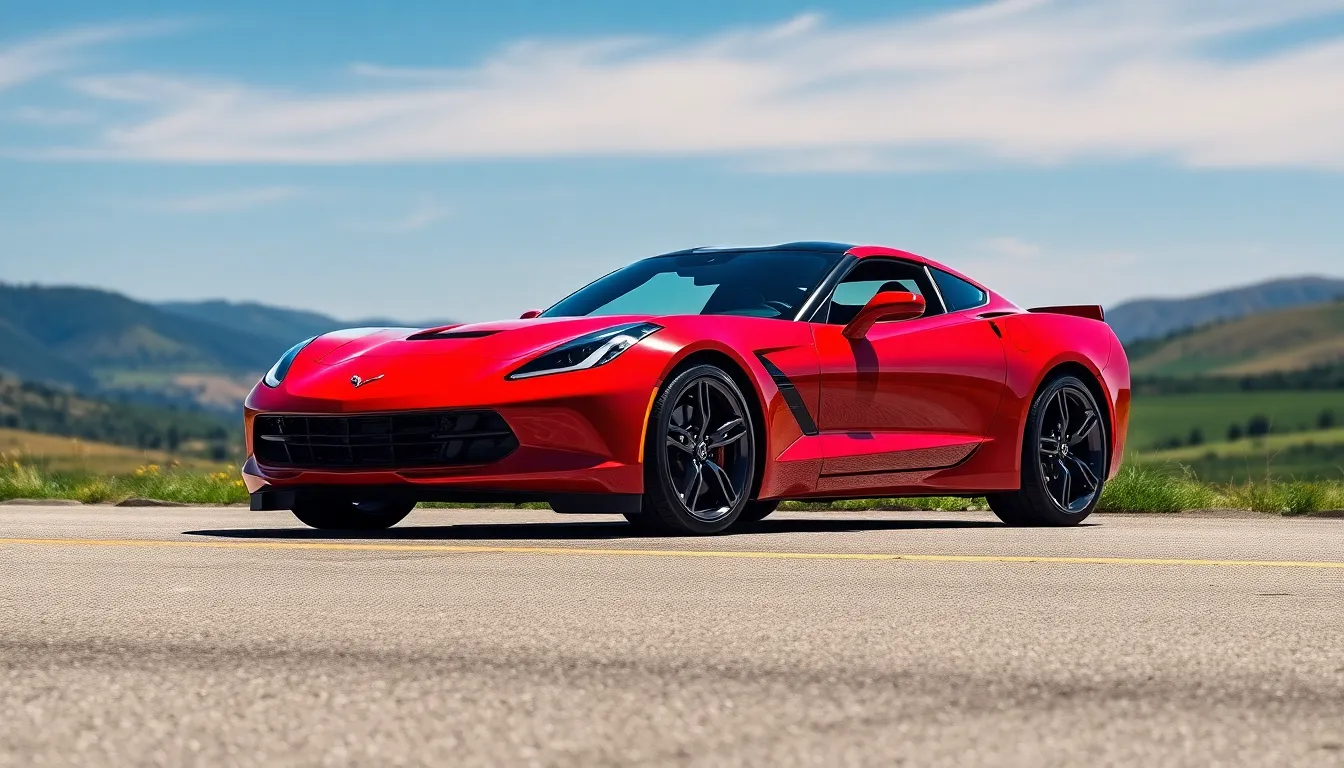
The Corvette C7 presents owners with a unique ownership proposition that balances exceptional performance with reasonable maintenance requirements for a supercar-caliber vehicle. Understanding both potential issues and long-term value retention helps prospective buyers make informed decisions about C7 ownership.
Common Issues and Maintenance
Engine problems rarely affect C7 Corvettes when properly maintained, though exact issues appear across different model years. The LT1 base engine demonstrates exceptional reliability, while supercharged LT4 and LT5 variants require more attention due to their complex forced induction systems.
Transmission concerns primarily affect manual transmissions in early 2014-2015 models, with some owners reporting grinding issues and premature clutch wear. Automatic 8L90 transmissions show fewer problems but occasionally experience software-related shift hesitation that dealers address through updates.
Electrical issues manifest most commonly in the MyLink infotainment system, where touchscreen responsiveness degrades over time and Bluetooth connectivity becomes intermittent. The Performance Data Recorder system sometimes fails to record properly, requiring module replacement under warranty coverage.
Cooling system maintenance becomes critical for track-focused Z06 and ZR1 models, which experience overheating during extended high-performance driving sessions. Supercharger heat exchanger pumps fail occasionally, particularly in Z06s driven aggressively in hot climates.
Regular maintenance costs range from $800-1,200 annually for basic service including oil changes, brake inspections, and fluid replacements. Premium synthetic oil requirements increase service costs compared to conventional vehicles, with oil changes ranging from $150-250 at dealerships.
Brake system maintenance varies significantly based on driving style, with track enthusiasts replacing pads and rotors every 10,000-15,000 miles while street drivers achieve 25,000-30,000 miles between replacements. Carbon ceramic brakes on Z06 and ZR1 models require specialized service and replacement costs exceeding $8,000 per set.
Tire replacement frequency depends heavily on driving habits and model variant, with high-performance summer tires lasting 8,000-12,000 miles under spirited driving conditions. Run-flat tire replacements cost $300-500 each, while track-focused compounds reach $400-600 per tire.
Resale Value Considerations
C7 Corvettes maintain strong resale values compared to other sports cars in their price range, with limited edition models showing particularly impressive value retention. Base Stingray models typically retain 60-65% of their original MSRP after three years, while Z06 and ZR1 variants maintain 65-70% due to their exclusivity and performance credentials.
Special edition models command premium prices on the secondary market, with Carbon 65 Edition and Grand Sport Heritage Package variants appreciating beyond their original sticker prices. These limited production runs create collector interest that supports long-term value appreciation.
Mileage impact affects C7 values less dramatically than traditional luxury cars, as many buyers purchase these vehicles specifically for driving enjoyment rather than transportation utility. Well-maintained high-mileage examples often sell for only 10-15% less than comparable low-mileage units.
Market demand remains strong for manual transmission C7s, which represent the final generation of manual Corvettes before the C8’s automatic-only configuration. This historical significance adds value premiums of $2,000-5,000 for stick-shift models in good condition.
Color and option combinations significantly influence resale values, with popular colors like Torch Red, Arctic White, and Laguna Blue maintaining stronger appeal than unique shades. Performance packages including Z51 handling, magnetic ride control, and competition seats add substantial value retention benefits.
Geographic location affects C7 values considerably, with southern and western markets commanding higher prices due to year-round driving seasons and lower corrosion risks. Climate-controlled storage and documented maintenance history boost values by 5-10% regardless of location.
Comparing C7 Model Variants
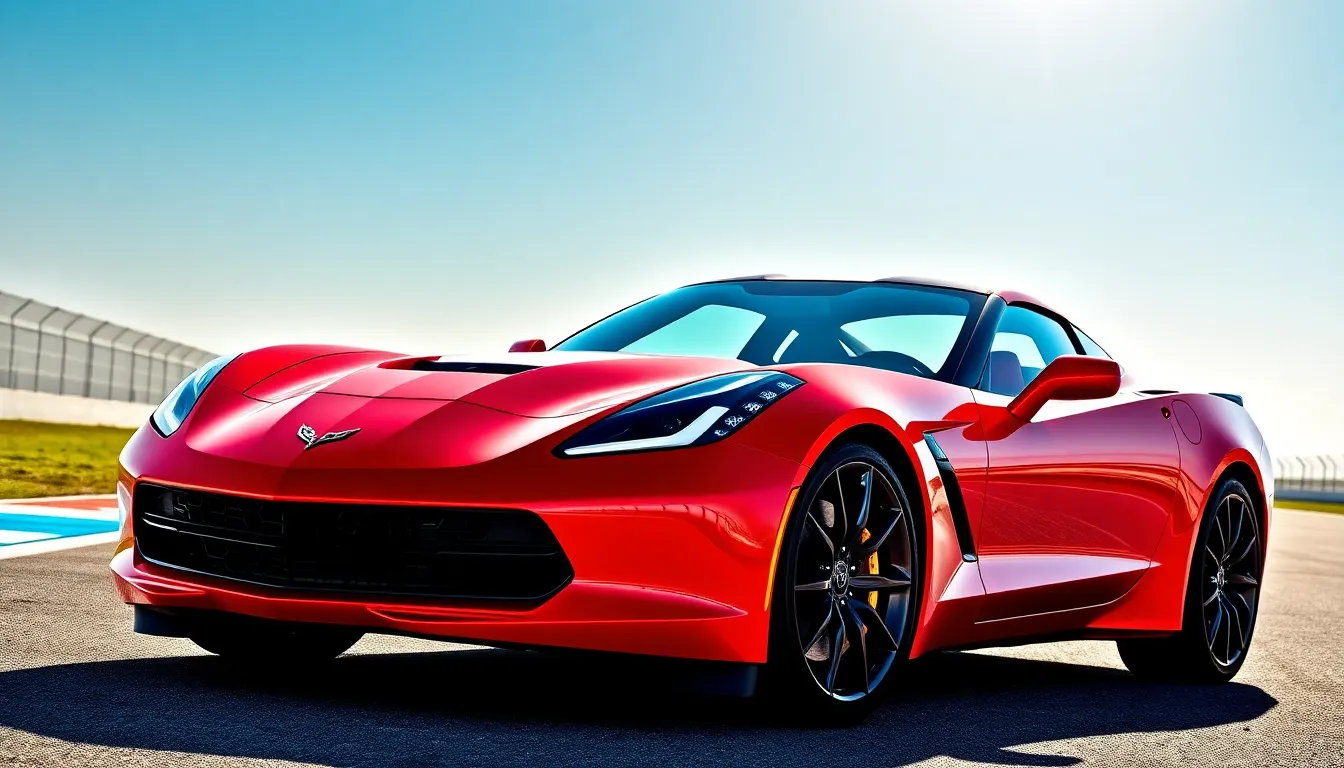
Understanding the differences between Chevrolet Corvette C7 variants helps us identify which model best matches exact performance requirements and budget considerations. Each variant targets distinct driving preferences while maintaining the core C7 DNA.
Stingray vs Z06 vs ZR1
The Stingray serves as our foundation model, featuring the naturally aspirated 6.2-liter LT1 V8 engine that produces 455 horsepower and 460 lb-ft of torque. Performance enthusiasts appreciate its 0-60 mph acceleration time of 3.7 seconds when equipped with the Z51 Performance Package. Standard features include magnetic ride control, electronic limited-slip differential, and premium interior materials that create an accessible entry point into C7 ownership.
Z06 variants escalate performance dramatically with the supercharged LT4 V8 engine generating 650 horsepower and 650 lb-ft of torque. Track-focused enhancements include carbon fiber body panels, Brembo carbon ceramic brakes, and Michelin Pilot Sport Cup 2 tires. Aerodynamic improvements feature a larger front splitter, dive planes, and an adjustable rear wing that generates up to 300 pounds of downforce at 150 mph.
ZR1 models represent the pinnacle of C7 performance with the supercharged LT5 V8 producing 755 horsepower and 715 lb-ft of torque. Exclusive features include a carbon fiber hood with visible engine components, larger intercoolers, and track-exact aerodynamics. Performance metrics showcase a 0-60 mph time of 2.85 seconds and a top speed exceeding 212 mph on select tracks.
| Model Variant | Engine | Horsepower | Torque (lb-ft) | 0-60 mph | Starting MSRP |
|---|---|---|---|---|---|
| Stingray | LT1 V8 | 455 hp | 460 | 3.7 seconds | $55,400 |
| Z06 | LT4 V8 | 650 hp | 650 | 3.2 seconds | $79,450 |
| ZR1 | LT5 V8 | 755 hp | 715 | 2.85 seconds | $119,995 |
Manual vs Automatic Transmission Options
Manual transmission options include the 7-speed manual with Active Rev Matching technology that automatically blips the throttle during downshifts. Enthusiasts value the direct connection between driver and machine, particularly during track sessions where precise gear control matters most. Launch control functionality coordinates clutch engagement, throttle response, and traction management for consistent acceleration runs.
Automatic transmission choices feature the 8-speed paddle-shift automatic that delivers lightning-fast gear changes in 150 milliseconds. Performance modes adjust shift points, throttle response, and transmission behavior to match driving conditions. Track Mode optimizes gear holding patterns for circuit driving, while Weather Mode modulates shifts for wet conditions. Fuel economy improvements average 2-3 mpg better than manual counterparts across all driving scenarios.
Both transmission types integrate seamlessly with Performance Traction Management and magnetic ride control systems. Manual variants appeal to purists who prioritize driver engagement, while automatics attract owners seeking maximum performance with convenience features. Track times remain virtually identical between transmission options when using launch control or paddle shifters effectively.
Conclusion
The Chevrolet Corvette C7 stands as one of America’s greatest automotive achievements representing the perfect balance between supercar performance and everyday practicality. We’ve seen how this generation transformed the Corvette legacy with its revolutionary design language advanced technology and impressive performance capabilities across all variants.
Whether you’re considering the accessible Stingray the track-focused Z06 or the flagship ZR1 the C7 offers something for every performance enthusiast. Its combination of reliable ownership costs strong resale values and genuine supercar dynamics makes it an exceptional choice in today’s sports car market.
For those seeking an authentic American sports car experience that delivers both excitement and value the C7 Corvette continues to set the standard that others aspire to match.
Frequently Asked Questions
What makes the Chevrolet Corvette C7 revolutionary compared to previous generations?
The C7 represents a complete transformation from earlier Corvettes, featuring aggressive angular bodywork, lightweight construction, and advanced aerodynamics. It introduced revolutionary styling with larger air intakes, automatic rear spoiler deployment, and enhanced cooling systems. The interior also received a dramatic upgrade with premium materials, modern technology, and sophisticated driver-focused features that rival European supercars.
What engine options are available in the C7 Corvette lineup?
The C7 offers three powerful engine options: the base Stingray features a 6.2-liter LT1 V8 producing 455 horsepower, the Z06 includes a supercharged LT4 generating 650 horsepower, and the range-topping ZR1 boasts a supercharged LT5 engine delivering 755 horsepower. All engines feature advanced technologies like dry sump lubrication for enhanced performance and reliability.
How does the C7’s performance compare to European supercars?
The C7 delivers supercar-level performance at a fraction of the cost. The ZR1 achieves 0-60 mph in just 2.85 seconds, while even the base Stingray reaches 60 mph in 3.7 seconds. With advanced features like magnetic ride control and Performance Traction Management, the C7 competes directly with European supercars in terms of acceleration, handling, and track performance.
What technology features does the C7 Corvette interior offer?
The C7’s interior includes an 8-inch color instrument display, MyLink infotainment system with smartphone integration, premium Bose audio, and dual-zone climate control. Advanced features include the Performance Data Recorder (PDR) for video recording track sessions, Head-Up Display (HUD) for real-time data, and heated/ventilated seats with premium leather upholstery and carbon fiber trim.
Is the C7 Corvette practical for daily driving?
Yes, the C7 excels as a daily driver thanks to Magnetic Selective Ride Control for smooth rides, ergonomic seating, ample storage space, and improved visibility. The advanced safety features and comfortable cabin make it suitable for everyday use, while the magnetic ride system adapts between comfortable cruising and track-focused performance settings.
What are the common reliability issues with C7 Corvettes?
Common C7 issues include occasional engine reliability concerns, transmission problems in some models, and electrical system glitches. However, the C7 generally offers reasonable maintenance requirements for a supercar. Regular maintenance costs are manageable, though high-performance driving may increase brake and tire replacement frequency. Overall reliability is good compared to European competitors.
How well do C7 Corvettes hold their value?
C7 Corvettes maintain strong resale values, particularly limited edition models like the Grand Sport Heritage Package and Carbon 65 Edition. Factors affecting resale value include mileage, color choice, condition, and geographic location. Special editions and low-mileage examples tend to appreciate due to their collector appeal and connection to Corvette’s racing heritage.
What are the differences between C7 Stingray, Z06, and ZR1 models?
The Stingray serves as the entry-level model with 455 horsepower and 0-60 mph in 3.7 seconds. The Z06 offers track-focused performance with 650 horsepower and enhanced aerodynamics. The ZR1 represents the ultimate performance variant with 755 horsepower, achieving 0-60 mph in 2.85 seconds and featuring the most aggressive styling and track-oriented features.

